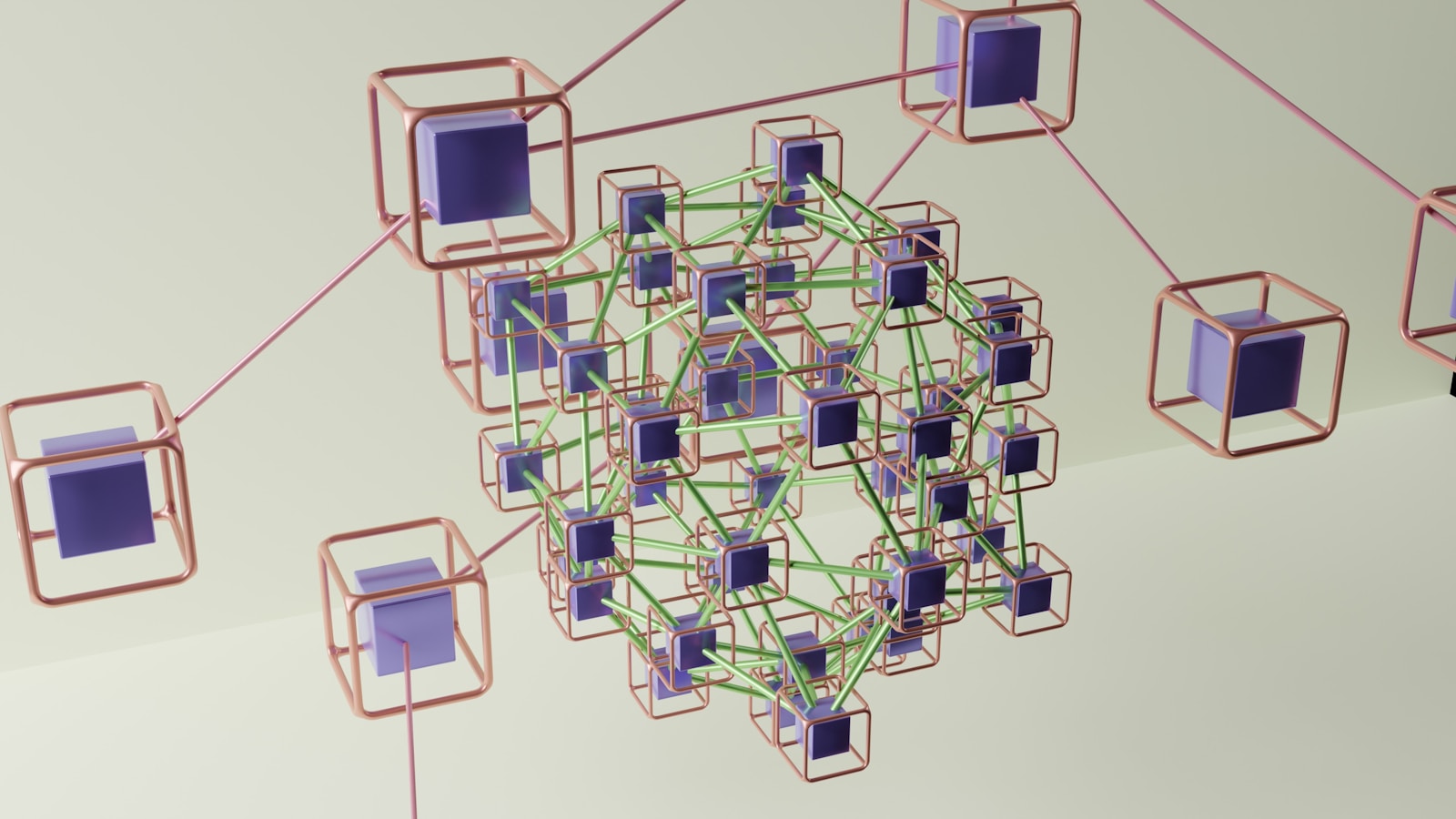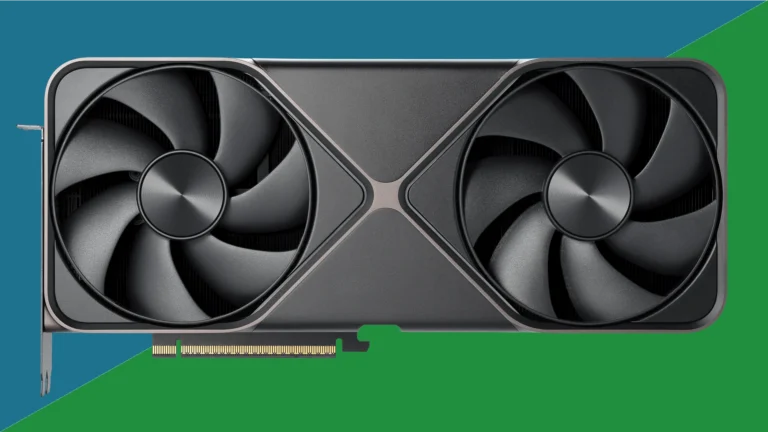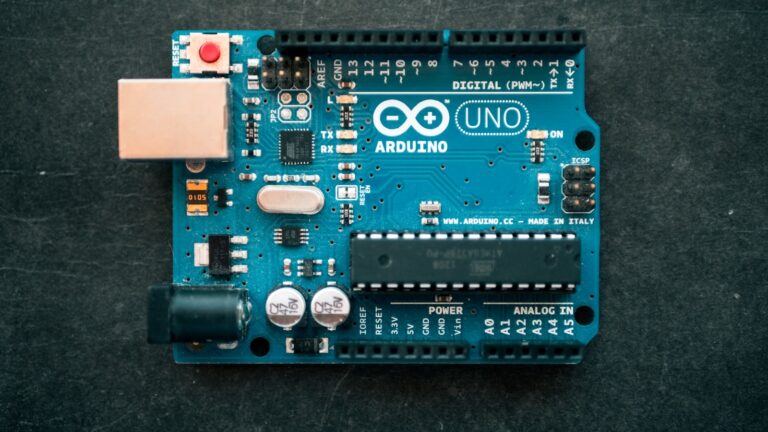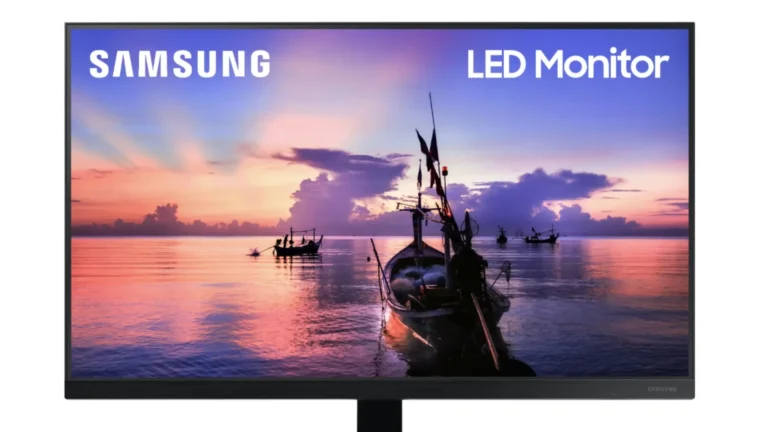
Imagine putting on a pair of glasses and suddenly seeing digital information overlaid on the real world around you. This is spatial computing, a technology that blends the digital and physical worlds together. Spatial computing creates experiences where digital content exists in and interacts with our physical space, making computers understand and respond to the world the way humans naturally do.
You might have already experienced elements of spatial computing through augmented reality apps on your phone or virtual reality headsets. But this technology goes beyond these examples. It maps your surroundings and anchors digital content to real places and objects, making interactions feel more natural and intuitive. From enhancing mixed-reality interactions to transforming business operations, spatial computing is changing how you interact with technology.
As this field evolves, you’ll see it reshape everything from how you work and shop to how you learn and entertain yourself. Companies like Apple and others are developing devices specifically designed to take advantage of spatial computing’s potential, bringing this technology into everyday life.
What Is Spatial Computing?
Spatial computing is the use of digital technology to interact with and understand the physical world in three dimensions. It blends the real and virtual by combining technologies like augmented reality (AR), virtual reality (VR), mixed reality (MR), artificial intelligence (AI), and the Internet of Things (IoT).
At its core, spatial computing allows humans and machines to map, simulate, and interact with physical spaces in ways that feel natural and immersive. Everyday examples include GPS navigation, AR filters on social media, and advanced tools like autonomous vehicles or VR training systems (source: MIT Press).
Key Components of Spatial Computing
- Sensing & Mapping
- Devices use cameras, LiDAR, GPS, and motion sensors to capture and understand the environment.
- Example: ARKit (Apple) and ARCore (Google) map surroundings for AR apps.
- Interaction Interfaces
- Gesture recognition, voice commands, eye tracking, and haptic feedback let users interact naturally.
- Example: VR controllers or hand-tracking in Meta Quest headsets.
- Data Processing & AI
- AI algorithms interpret spatial data, enabling real-time responses.
- Example: Self-driving cars analyzing road conditions instantly.
- Visualization
- Digital content is overlaid or integrated into the real world through AR glasses, VR headsets, or mobile devices.
Applications of Spatial Computing
Spatial computing is already transforming multiple industries:
- Healthcare
- Surgical training in VR, AR-assisted surgeries, and remote patient monitoring.
- Education & Training
- Immersive classrooms, virtual labs, and realistic simulations for skills training.
- Retail & E-commerce
- Virtual try-on experiences, AR product previews in homes.
- Transportation
- Autonomous vehicles, smart traffic systems, and drone navigation.
- Work & Collaboration
- Virtual meeting spaces, digital twins of factories, and remote design collaboration.
- Entertainment & Gaming
- AR games like Pokémon Go, VR concerts, and immersive storytelling.
Benefits of Spatial Computing
- Enhanced decision-making through real-time 3D data visualization.
- Improved efficiency in industries like logistics, healthcare, and construction.
- More natural human-computer interaction via gestures, voice, and spatial awareness.
- Immersive learning and entertainment experiences.
Challenges & Limitations
Despite its promise, spatial computing faces hurdles:
- Privacy concerns (constant data collection and location tracking).
- High costs of hardware and software development.
- Technical limitations (battery life, computing power, latency).
- Standardization issues across platforms and devices (source: arXiv).
The Future of Spatial Computing
Looking ahead, spatial computing is expected to become as common as smartphones are today. With the rise of AR glasses, 5G/6G connectivity, and AI-driven digital twins, we may soon live in a world where digital and physical realities seamlessly blend.
Imagine walking through a city where your smart glasses provide real-time navigation, highlight points of interest, translate signs instantly, and even let you collaborate with colleagues across the globe—all layered onto your real-world view.
Final Thoughts
Spatial computing is not just another tech buzzword—it’s the next computing paradigm. By merging the digital and physical worlds, it has the potential to reshape how we live, work, and interact. For businesses, educators, and everyday users, understanding spatial computing today means being ready for the immersive, intelligent world of tomorrow.
Key Takeaways
- Spatial computing blends digital information with the physical world to create more natural and intuitive technology interactions.
- You can experience spatial computing through devices like AR/VR headsets that map physical spaces and anchor digital content to real objects.
- This technology is transforming industries by enabling new ways to visualize data, collaborate remotely, and interact with digital information.
Fundamentals of Spatial Computing
Spatial computing represents a significant shift in how we interact with digital systems by merging the physical and digital worlds. This technology enables computers to understand and respond to three-dimensional spaces while allowing humans to interact with digital content in more intuitive ways.
Defining Spatial Computing
Spatial computing refers to technologies that enable humans to interact with computers in three-dimensional spaces. Unlike traditional computing that relies on screens and keyboards, spatial computing understands the physical world around you and blends digital elements into it.
This technology creates a seamless integration between digital and physical environments. You can manipulate virtual objects with your hands, walk around 3D models, or see information overlaid on real-world objects.
The key principle behind spatial computing is that computers can perceive, understand, and respond to the physical space they exist in. This means your devices become aware of:
- Physical surroundings and objects
- Your position and movements
- Spatial relationships between objects
- Environmental conditions like lighting
Historical Evolution
The journey of spatial computing began in the 1960s with Ivan Sutherland’s “Sword of Damocles,” the first head-mounted display. This primitive system laid the groundwork for future developments in how computers could interact with three-dimensional space.
The 1990s saw significant advancements with early VR headsets and AR experiments. Companies like NASA and military organizations implemented specialized spatial computing solutions for training and simulation.
The true breakthrough came in the 2010s with consumer devices like Microsoft HoloLens, Oculus Rift, and later the Apple Vision Pro. These technologies made spatial computing accessible to everyday users for the first time.
The evolution continues today with increasingly powerful hardware, more sophisticated sensors, and improved software algorithms making experiences more realistic and useful.
Key Components and Technologies
Spatial computing relies on several interconnected technologies working together. Hardware components include sensors (cameras, depth sensors, LiDAR), displays (transparent or immersive), and processing units capable of real-time computations.
Software elements are equally important and include:
- Computer vision algorithms for scene understanding
- SLAM (Simultaneous Localization and Mapping) for tracking position
- 3D rendering engines
- Gesture and voice recognition systems
Different implementations of spatial computing exist across a spectrum. AR (Augmented Reality) overlays digital content on the real world. VR (Virtual Reality) creates fully immersive digital environments. Mixed Reality combines elements of both, allowing virtual objects to interact with real ones.
The field also incorporates spatial audio, haptic feedback, and eye-tracking to create more immersive experiences. These technologies help you interact with digital content in ways that feel natural and intuitive.
Spatial Computing in Practice
Spatial computing technologies are transforming how businesses operate and how professionals work across industries. These tools merge digital information with our physical surroundings, creating new opportunities for innovation and efficiency.
Real-World Applications
Businesses are finding valuable ways to implement spatial computing in their daily operations. Retailers use AR to let customers visualize products in their homes before purchasing. This technology reduces return rates and increases customer satisfaction.
Healthcare professionals employ spatial tools for complex surgeries, overlaying patient scans onto their bodies during procedures. This improves precision and reduces risks.
Manufacturing plants use spatial computing to guide workers through assembly processes. Digital instructions appear directly in their field of view, reducing errors by 90% in some cases.
The automotive industry leverages these technologies for design reviews. Engineers can examine full-scale virtual prototypes, cutting development time and costs significantly.
Spatial Computing for Training and Education
Training programs are being revolutionized through spatial computing technologies. You can now practice complex procedures in virtual environments before performing them in real life. This hands-on approach improves retention by up to 75% compared to traditional methods.
Medical students use AR simulations to practice surgeries without risk to patients. The systems provide real-time feedback on technique and decision-making.
Corporate training has embraced spatial tools for onboarding. New employees learn facility layouts and safety procedures through guided AR experiences, reducing training time by 40%.
Military and emergency services use immersive training scenarios that adapt to each trainee’s performance. These personalized experiences prepare personnel for high-stress situations more effectively than conventional training.
Engineering and Construction
The engineering and construction industries have adopted spatial computing to transform traditional workflows. You can now visualize complete building projects in 3D before breaking ground, detecting potential issues early.
Key benefits include:
- 65% reduction in rework costs
- 30% faster project completion
- 25% lower material waste
On construction sites, workers use AR headsets to see building information models overlaid on their physical environment. This ensures proper installation and reduces errors.
Maintenance teams access digital twins of facilities, viewing hidden infrastructure like electrical wiring and plumbing through walls. This capability cuts diagnostic time by half and improves first-time fix rates.
Urban planners simulate how new developments will impact surrounding areas, testing factors like traffic flow, sunlight exposure, and flood risks before finalizing designs.
Technological Ecosystem
Spatial computing requires a complex blend of hardware and software to create immersive experiences. The technology has evolved rapidly in recent years, with significant advances in both physical devices and the programming platforms that support them.
Hardware Evolution
The physical components of spatial computing have transformed dramatically from bulky headsets to sleek, powerful devices. Early iterations struggled with weight distribution and battery life, making extended use uncomfortable.
Today’s hardware features advanced sensors, cameras, and processing units built into increasingly compact forms. These components work together to map physical spaces and overlay digital information accurately.
Key improvements include:
- Higher resolution displays for more realistic visuals
- Enhanced motion tracking for precise interaction
- Improved depth sensors for better environmental mapping
- Lighter materials for extended comfort
The miniaturization of these components has been crucial, allowing you to use devices for hours without discomfort while maintaining processing power.
Spatial Computer and Vision Pro Headset
The Apple Vision Pro represents a significant leap forward in spatial computing hardware. Unlike traditional VR headsets, it functions as a complete spatial computer with its own operating system and interface.
The Vision Pro’s standout features include:
- Dual micro-OLED displays providing crisp 4K resolution per eye
- External EyeSight display showing your eyes to others nearby
- Hand and eye tracking that eliminates the need for controllers
- Spatial audio for immersive sound experiences
The device balances computing power and wearability by distributing components between the headset and a separate battery pack that clips to your clothing. This design choice keeps the headset lighter while maintaining processing capability.
You can interact with both digital content and your physical surroundings simultaneously, making it truly mixed reality rather than purely virtual.
Software Ecosystem and Development
The software ecosystem supporting spatial computing is expanding rapidly. Developers now have access to specialized tools that simplify creating immersive experiences.
Major platforms provide SDKs (Software Development Kits) with pre-built functions for common spatial tasks like:
- Environmental mapping
- Object recognition
- Gesture interpretation
- Physics simulation
The App Store for spatial devices features applications across productivity, entertainment, education, and design categories. These range from immersive 3D modeling tools to spatial versions of familiar productivity apps.
Development challenges remain, particularly in creating intuitive interfaces that feel natural in three-dimensional space. You’ll find that the best applications don’t simply port 2D experiences but reimagine interaction for spatial environments.
Programming for spatial computing requires understanding both traditional development and spatial design principles to create truly effective experiences.
The Future of Spatial Computing
Spatial computing is rapidly evolving with technologies becoming lighter, more affordable, and energy efficient. This transformation is reshaping how you’ll interact with digital content and physical spaces in your daily life.
Trending Innovations
The next wave of spatial computing innovations focuses on making technology more intuitive and integrated into your everyday experience. Devices are becoming less obtrusive, with smart glasses evolving to look more like regular eyewear.
Key innovations to watch:
- Real-time environmental mapping technology
- Advanced haptic feedback systems
- More powerful edge computing capabilities
- AI-powered spatial recognition
These technologies will enable you to interact with digital content using natural gestures and voice commands. Your home and workplace will become smarter environments that understand context and adapt to your needs automatically.
Processing power improvements will allow complex spatial tasks to happen locally on devices, reducing latency and increasing privacy protections for your data.
Extended and Mixed Reality
Extended reality technologies are merging the digital and physical worlds in unprecedented ways. You’ll soon experience digital information seamlessly overlaid onto your real environment.
In healthcare, doctors will use spatial computing to view patient data during procedures without looking away from their work. In education, you’ll learn complex concepts through interactive 3D models you can manipulate.
Practical applications emerging:
- Remote collaboration tools with lifelike presence
- Training simulations with real-time feedback
- AR navigation systems integrated with city infrastructure
- Spatial design tools for architecture and manufacturing
Mixed reality will become an essential workplace tool, bridging geographical gaps and enabling remote expert consultations in fields from medicine to manufacturing.
Metaverse and Immersive Environments
The metaverse represents the ultimate evolution of spatial computing—persistent virtual worlds where you can interact, create, and transact. These spaces will become increasingly important for both work and leisure.
Virtual environments will evolve beyond gaming to become social hubs, digital marketplaces, and creative spaces. You’ll be able to attend concerts, meetings, or classes in immersive environments that feel remarkably real.
Metaverse developments on the horizon:
- Interoperable digital assets you can use across platforms
- Virtual economies with real-world value exchange
- Photorealistic avatars with natural expressions
- Spatial audio that precisely mimics real-world acoustics
These immersive environments will change how you shop, with virtual try-ons becoming standard for clothing, furniture, and other products. Digital twins of physical spaces will allow you to visit and interact with distant locations as if you were actually there.
User Experience in Spatial Computing
Spatial computing transforms how we interact with digital content by creating three-dimensional, immersive environments. The user experience in these spaces depends on thoughtful design that considers how humans naturally interact with their surroundings.
Spatial Audio and Visual Experiences
Spatial audio creates a sense of presence by mimicking how sound works in the real world. When you wear a headset, sounds can come from specific directions and distances, making virtual environments feel more realistic. This three-dimensional audio experience helps your brain process where objects are located without having to see them.
Visual elements in spatial computing need careful consideration too. Objects must respond to your movements naturally, with lighting and shadows that match what you’d expect in reality.
Effective spatial UX combines these audio and visual cues to create what designers call “presence” – the feeling that you’re actually there, not just viewing content through a screen. Your brain processes these spatial cues automatically, which reduces cognitive load and makes interactions feel more natural.
Creating Immersive Experiences
Immersion in spatial computing requires more than just visual and audio fidelity. You need to feel like you can interact with the virtual world intuitively. Successful spatial experiences let you use natural gestures and movements rather than learning complex controls.
Hand tracking technology allows you to grab, point, and manipulate virtual objects directly. This direct manipulation creates a powerful sense of agency and embodiment.
Environmental design plays a crucial role too. Spaces should have recognizable elements that help you understand what’s possible. For example, buttons should look pressable, and interactive surfaces should provide visual feedback.
Scale and perspective must be carefully calibrated to match human perception. When digital elements appear at the wrong size or distance, it can create discomfort and break immersion. The most effective spatial interfaces blend the digital and physical worlds seamlessly.
Collaboration in Virtual Realities
Virtual collaboration spaces transform how teams work together across distances. When you join a spatial meeting, you can see representations of colleagues (avatars) and interact with shared 3D content in ways impossible in traditional video calls.
Human-machine interaction in spatial computing allows for more natural communication. You can point at objects, use hand gestures, and move around shared virtual models – abilities that closely mirror in-person collaboration.
Effective collaborative spaces need to provide:
- Clear representation of who’s present
- Intuitive ways to share and manipulate content
- Spatial audio that makes conversations feel natural
- Tools that match the collaboration task (whiteboards, 3D models, etc.)
Designing for different levels of technical expertise is essential. New users need clear guidance on how to move, communicate, and interact, while experienced users benefit from more advanced tools and shortcuts.
Data and Analytics
Spatial computing transforms how you interact with data by placing it in three-dimensional contexts that reveal new insights. The integration of spatial elements with traditional analytics creates powerful tools for decision-making across industries.
Spatial Data Capture and Analysis
Spatial data comes from many sources – sensors, cameras, lidar, and user interactions within physical spaces. This digitization of activities involving people, machines, and environments creates rich datasets that weren’t possible before.
You can now analyze information in context rather than as abstract numbers. For example, retail stores track customer movement patterns to optimize layout, while factories map worker interactions with equipment to improve safety.
Modern spatial analytics platforms allow you to:
- Visualize data in its physical context
- Identify patterns invisible in 2D representations
- Make predictions based on spatial relationships
Immersive analytics takes this further by putting you inside your data. You can walk through 3D charts or manipulate variables with natural gestures, making complex relationships more intuitive.
Digital Twins and Simulations
Digital twins create virtual replicas of physical assets, processes, or environments. These spatial computing applications allow you to monitor, analyze, and optimize real-world systems without disruption.
You can test scenarios before implementation:
- How will a new factory layout affect production?
- What happens if this component fails?
- Where are the bottlenecks in your supply chain?
Digital twins update in real-time with data from connected sensors, creating living models that mirror physical reality. Manufacturing companies use them to predict maintenance needs, while urban planners simulate traffic patterns before building roads.
The technology helps you contextualize business data in ways that were previously impossible. You can spot inefficiencies, test improvements virtually, and implement only the best solutions.
Frequently Asked Questions
Spatial computing is transforming how we interact with digital information. The following questions address common areas of interest from technical specifications to career opportunities.
What distinguishes spatial computing from virtual reality and augmented reality?
Spatial computing serves as an umbrella term that encompasses both VR and AR technologies. While virtual reality (VR) creates fully immersive digital environments, and augmented reality (AR) overlays digital elements onto the real world, spatial computing goes further.
Spatial computing creates a seamless blend where digital objects understand and interact with physical spaces. It uses advanced sensors, cameras, and processing to map environments in real-time.
Unlike standalone VR experiences, spatial computing applications can recognize rooms, furniture, and even hand gestures to create contextually aware interactions.
What are the primary applications and examples of spatial computing in industry?
Manufacturing sectors use spatial computing for assembly line visualization, remote expert assistance, and training simulations that reduce errors and boost efficiency.
Healthcare professionals leverage spatial interfaces for surgical planning, medical education, and therapeutic applications that improve patient outcomes.
Retail businesses implement spatial computing for virtual try-on experiences, store layout planning, and interactive product demonstrations that enhance customer engagement.
Architecture and construction firms utilize spatial tools for immersive building walkthroughs, on-site issue detection, and collaborative design reviews that save time and resources.
Which companies are leading the development of spatial computing technology?
Apple has positioned itself as a major player with its Vision Pro headset and visionOS operating system designed specifically for spatial experiences.
Microsoft continues to advance its HoloLens platform alongside Azure Spatial Anchors for enterprise applications in manufacturing and healthcare.
Meta (formerly Facebook) invests heavily in both hardware and software aspects of spatial computing through its Quest devices and Horizon platforms.
Google develops spatial capabilities through ARCore and its ongoing research into ambient computing and spatial audio technologies.
Smaller innovators like Stage Meta and Brightline Interactive are also making significant contributions to the spatial computing landscape.
What are the career opportunities available in the field of spatial computing?
Spatial computing developers are in high demand, working on everything from core technology frameworks to specialized industry applications.
UX/UI designers focusing on spatial interfaces need to understand both traditional design principles and three-dimensional interaction models.
3D artists and modelers create the assets and environments that populate spatial computing applications across entertainment and professional tools.
Hardware engineers develop the next generation of devices with improved displays, tracking capabilities, and comfort for extended use.
Data specialists work on the spatial mapping, computer vision algorithms, and machine learning models that power environmental understanding.
What programming languages and tools are commonly used for developing spatial computing solutions?
C# remains popular for spatial development, especially with Unity’s widespread adoption for AR/VR applications across multiple platforms.
Swift is essential for developing Apple Vision Pro applications, while JavaScript frameworks enable web-based spatial experiences.
Tools like Universal Scene Description (USD) have become vital for creating and sharing 3D assets across different spatial platforms.
Development kits such as ARKit (Apple), ARCore (Google), and MRTK (Microsoft) provide specialized functions for spatial awareness and interaction.
Spatial computing developers should be familiar with 3D mathematics, computer vision concepts, and sensor fusion techniques for creating responsive experiences.
How is Apple contributing to the advancements in spatial computing technology?
Apple’s Vision Pro headset represents a significant hardware advancement with its high-resolution displays, sophisticated eye and hand tracking, and powerful onboard processing.
VisionOS introduces a purpose-built operating system for spatial computing with frameworks that simplify development of spatially aware applications.
Apple’s RealityKit and ARKit developer tools have evolved to support complex spatial interactions, realistic rendering, and environment mapping.
The company’s focus on privacy in spatial computing addresses concerns about environmental scanning and data collection in users’ personal spaces.
Apple’s entry has accelerated industry adoption by bringing attention and legitimacy to spatial computing as the next computing paradigm.






